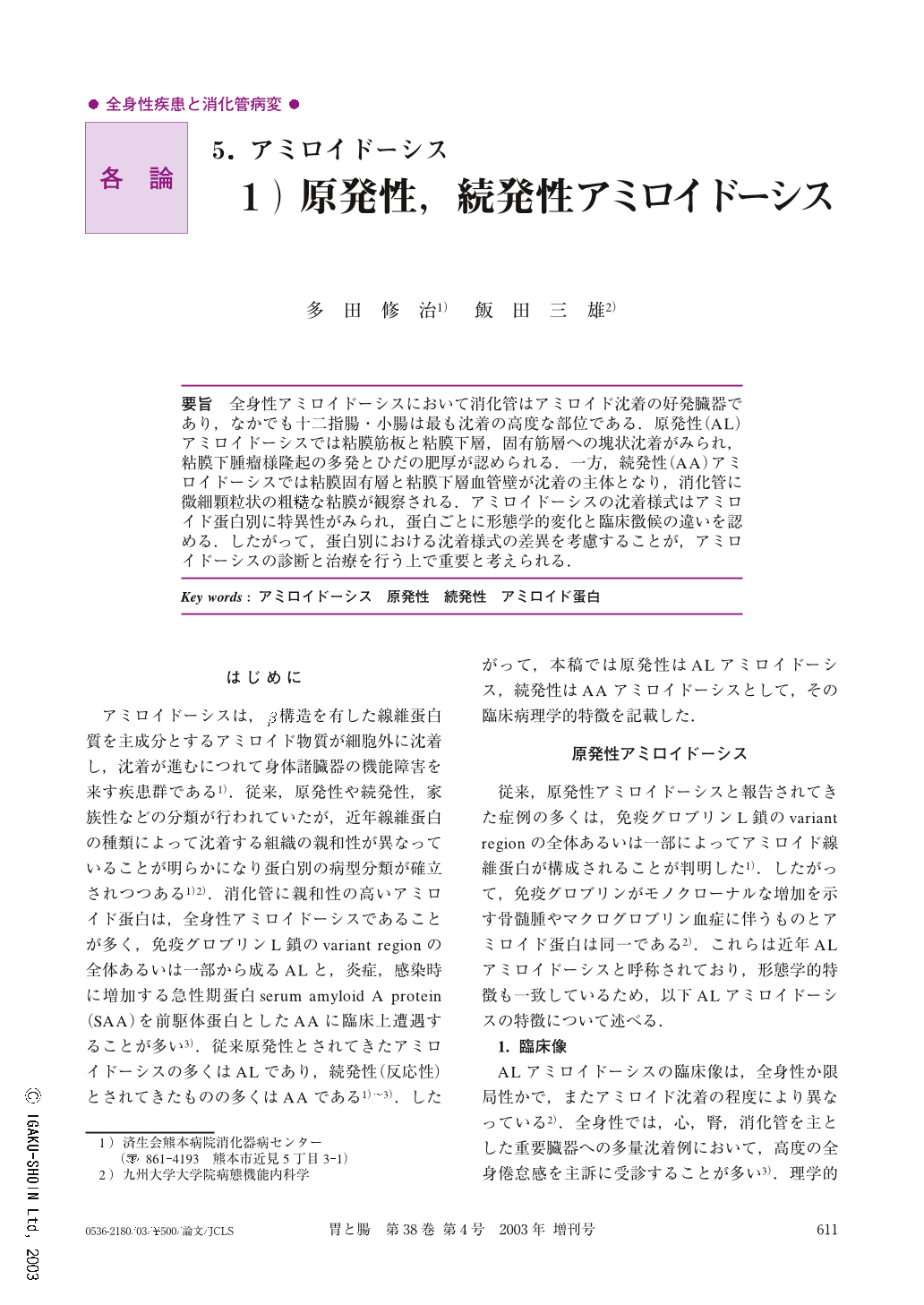Japanese
English
- 有料閲覧
- Abstract 文献概要
- 1ページ目 Look Inside
- 参考文献 Reference
- サイト内被引用 Cited by
全身性アミロイドーシスにおいて消化管はアミロイド沈着の好発臓器であり,なかでも十二指腸・小腸は最も沈着の高度な部位である.原発性(AL)アミロイドーシスでは粘膜筋板と粘膜下層,固有筋層への塊状沈着がみられ,粘膜下腫瘤様隆起の多発とひだの肥厚が認められる.一方,続発性(AA)アミロイドーシスでは粘膜固有層と粘膜下層血管壁が沈着の主体となり,消化管に微細顆粒状の粗ぞうな粘膜が観察される.アミロイドーシスの沈着様式はアミロイド蛋白別に特異性がみられ,蛋白ごとに形態学的変化と臨床徴候の違いを認める.したがって,蛋白別における沈着様式の差異を考慮することが,アミロイドーシスの診断と治療を行う上で重要と考えられる.
Clinicopathologic findings of gastrointestinal tract lesions were investigated, according to the chemical type of amyloid proteins, in patients with primary and secondary amyloidosis. Radiographic and endoscopic examination of the gastrointestinal tract revealed considerable differences between amyloid proteins. In cases of primary amyloidosis, consisting of light chain protein (AL), there were polypoid protrusions and invariable thickening of the folds, which reflected massive amyloid deposits in the muscularis mucosa, submucosa and muscularis propria. A coarse mucosal pattern with innumerable fine granular elevations was evident in cases of secondary amyloidosis, consisting of amyloid A protein (AA), and correlating with expansion of the lamina propria by amyloid deposits. Clinically, a frequent occurence of diarrhea, malabsorption, and gastrointestinal tract bleeding was present in the AA cases, whereas chronic intestinal pseudo-obstruction and mechanical obstruction were evident in the AL cases. Clinicopathologic differences between the AL and the AA do exist in gastrointestinal amyloidosis, and radiographic and endoscopic appearance indicates the specific accumulation pattern of each type of amyloid protein.

Copyright © 2003, Igaku-Shoin Ltd. All rights reserved.


